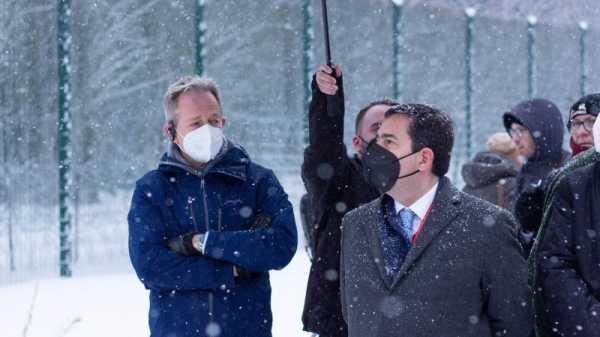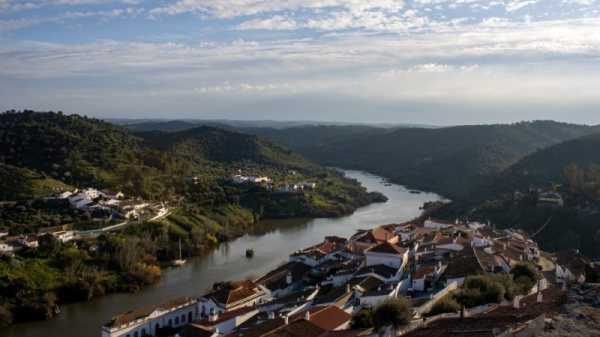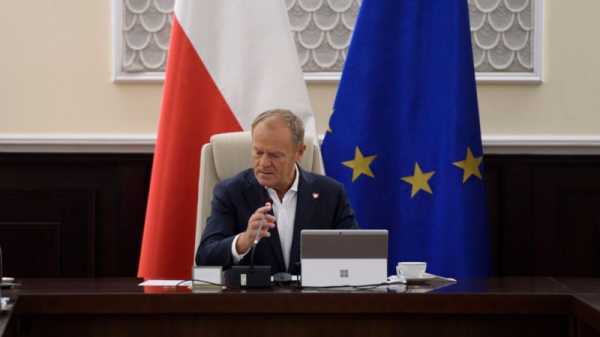
Several EU interior ministers gathered on Friday (21 January) to discuss how to step up the protection of EU external borders but failed to agree on a common approach, with options ranging from building fences at the borders to strengthening Schengen and migration legislation.
On Friday, an international conference in the Lithuanian capital Vilnius brought together European Commission officials and interior ministers from a number of EU countries in an attempt to draw lessons from the latest migrant crisis on the EU’s border with Belarus, which started last year.
“The current situation at the border seems to be much more stable than a couple of weeks or a couple of months ago,” Rustamas Liubajevas, commander of Lithuania’s State Border Guard Service, told reporters while standing at a recently built border fence at the Lithuanian – Belarus border.
Ylva Johansson, the EU Commissioner for Home Affairs, added that Belarus President Alexander Lukashenko ”seems to have lost his interest in using migrants in an instrumentalised way”.
However, EU leaders and commission representatives highlighted the need to step up the protection of the EU’s external borders.
“It’s time to talk about the lessons learned,” Johansson said.
“Based on the idea to move freely inside the Schengen area, we must ensure the security of our citizens,” Johansson said, stressing that for this, a “secure external border” is needed.

Lithuania declares state of emergency on border with Belarus
The Lithuanian parliament decided on Tuesday (9 November) to declare a state of emergency at its border region with Belarus, a first since the country declared independence from the Soviet Union in 1990.
Border fence
For some member states, this means building a physical barrier.
“The current situation, the reality shows that without physical barriers it is impossible to protect ourselves, our citizens, our national security and the security of the EU,” Lithuania’s Interior Minister Agnė Bilotaitė told the press conference at the Lithuanian-Belarus border.
She later added that in order to protect the Lithuanian and EU border, physical barriers, surveillance systems, and officers are essential.
“It is not ordinary migration, it is a hybrid attack,” Bilotaitė said, adding that in this case, countries have to be given instruments to protect themselves and the entire EU.
The Greek Minister of Migration and Asylum, Panagiotis Mitarachi, supported the idea of a physical border at the conference.
“We need to be clear that the EU has land and sea borders, and those borders need to be protected when needed by physical barriers and, accordingly, technology,” he said.
For France, which started its presidency of the EU Council on 1 January, migration issues are “one of the first priorities,” said French Interior Minister Gérald Darmanin.
Migration and borders are set to be discussed at an informal justice and home affairs council meeting on 3-4 February.
Darmanin said that “we have to be open” when talking about physical barriers, adding that “France has never been opposed to building these barriers“.
Even though the Commission is working to strengthen the external border security, Commissioner Johansson did not welcome member states’ wish to build physical barriers with EU funds.
“I have an impression that you think that EU funding is unlimited. It’s not. Let me remind you, EU member states cut the proposed funding for borders by one billion from the one proposed by the Commission,” she said.
The Home Affairs Commissioner said that redirecting funds to pay for fences would mean that “there will be less money or no money for equipment for the European borders and Coast Guard, there will be less money for what we can do on interoperability when it comes to surveillance when it comes to police cooperation to fight this madness”.

EU leaders caught in either-or argument over European defence strategy
Amid disunity over the way forward on European defence, EU leaders discussed on Tuesday night (5 October) whether the bloc should enhance its capacity to act independently while strengthening its partnership with NATO.
Johansson highlighted that funding is going towards “building the most advanced external border management system in the world,” adding the aim was to achieve full interoperability by 2023.
The Commissioner also mentioned the need to strengthen the European border agency, Frontex, “to support member states at the most vulnerable places along our borders” and improve external border management – a comment welcomed by the agency’s Executive Director Fabrice Leggeri.
Reaching the roots
Johansson highlighted, however, that border protection is not enough. “It’s a trap to focus too much on our external borders to manage migration,” she said, adding that cooperation with third countries is also needed. This is something that is stressed in the New Pact on Migration and Asylum.
“The Pact that the commission has proposed focuses on cooperation with third countries, countries of origin and countries of transit. We have to fight the smugglers along the routes,” Johansson said.
Enlargement Commissioner Olivér Várhelyi gave some examples of international cooperation.
“We are supporting Morocco in patrolling their borders and dismantling cross-border criminal networks. We’re helping Tunisia to modernise the maritime surveillance capabilities against irregular departures of migrants towards Europe. And we assist Libya in increasing their capacity for search and rescue operations and patrolling the country’s southern border,” he said.
Commissioner Johansson also called for the implementation of the new strategy on Schengen, presented by the Commission last June.
[Edited by Zoran Radosavljevic]
Source: euractiv.com



